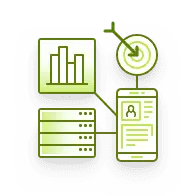5 Best Practices for B2B eCommerce Adoption
July 27, 2018 By Stacey Woods

According to a recent survey of 120 B2B e-commerce professionals, 80 percent of respondents either agreed or strongly agreed that their customers’ expectations followed B2C shopper practices. For this reason, amongst many others, it’s important that your B2B e-commerce site follows the best practices for both customer adoption and adoption by the business itself.
More and more wholesalers and brands are talking about the shift to online B2B sales, and the buzz is only mounting. Increasingly, and very quickly, B2B businesses are evolving to introduce e-commerce channels through which they
While you may think the shift to online sales will make sales rep jobs obsolete, hold your horses, because this is a vital and changing role. What other changes are behind the adoption of a B2B e-commerce site?
Here are the best practices your business should be following.
1. Sales Rep compensation for their online sales
It’s essential when adapting your B2B business to e-commerce that your sales reps are compensated also for sales taking place online. While sales are coming through online, it was still largely because of their own efforts that the sale was made.
Sales reps may have many different accounts they’re selling to and they should be compensated for their direct orders, be it in person, or ordering directly through a B2B website from an organization. They still took the time to build a relationship, before the B2B sales platform, and that relationship resulted in them spending money in the e-commerce store.
2. Sales and marketing coming together
The total amount of money that a customer spends with a brand or wholesaler is a derivative of the direct sales and marketing e-commerce sales coming in from that account. Together the two departments have the same goal – increased revenue. When working together, they can help piece together the missing pieces of the puzzle.
B2B e-commerce platforms that align their sales and marketing teams enjoy 36 percent higher retention rates than those who don’t. A modernized sales team ready for B2B e-commerce adoption is one that has highly integrated sales and marketing teams to collaborate and utilize one another’s information.
3. Sales Rep becomes an agent for change
While the adoption of B2B self service is still itself in the stages of infancy, sales reps have other responsibilities. Not only do they sell the merchandise directly, but they also train customers on board to do all of the transactions by themselves. The first time a sales rep may work through the customer on the tablet or PC, while 30 percent of customers do it by themselves.
In many cases, the sales reps are becoming even more involved leading this change in adopting the new B2B self service. However, not all self-service systems are able to easily adapt to the needs of both the customer and the sales agents alike.
Self-service tools which fail to understand the exact nature of the inquiry actually create more work for the sales agent since they bring them frustrated customers who are tired of dealing with a computer which cannot give them valid solutions for their problems.
In contrast, smarter customer service technology, can help bring instantaneous answers based on natural language, helping to reduce the number of difficult interactions between sales reps and customers.
The role of the sales rep definitely isn’t disappearing, however it is changing to accommodate to the needs of the new technologies put in place. It’s important to reiterate that without the reps being compensated accordingly there’s no drive to adopt the new adaptations of B2B e-commerce.
4. Pricing promotions
In some cases wholesalers and retailers may need a little extra motivation to check out your e-commerce store. Differential pricing and incentives to go online provides that extra bit of motivation. Particularly in a B2B settling, you can offer benefits by making a portion of your overall offer available.
Try things like offering a ‘starter’ value, or ‘entry level offer’ for new customers. Existing customers could be persuaded by a simple product extension or contract renewal online. These pricing promotions can be a benefit to both your business and your customers.
5. Mobile storefront
When you’re in the store, you’re oftentimes disconnected from the internet with no wireless connectivity. This can make it rather difficult to access applications or look up products in stock with reasonable speed.
By utilizing a solution with a mobile storefront, the application can work entirely offline and once you become connected again at home, you can still access all of this data.
A cloud-based store front which allows users to interact with the interface just as they would a B2C shopping experience eases your users through the shopping process without depending on wifi. Best of all, such tools help manufacturers and wholesale distributors boost sales by as much as 20 percent.
Also read: Wholesale e-Commerce: 6 Business Objectives You Must Consider
























